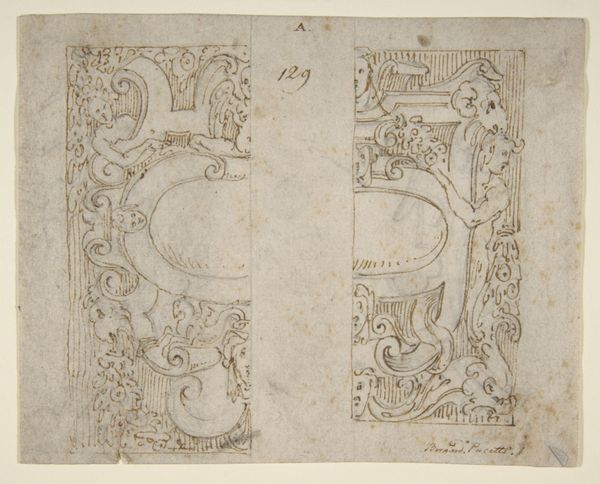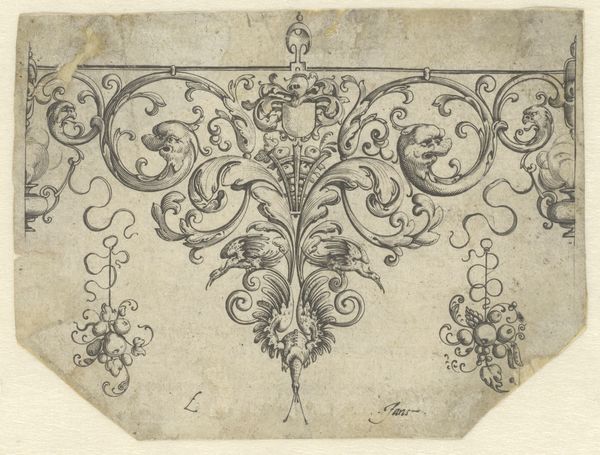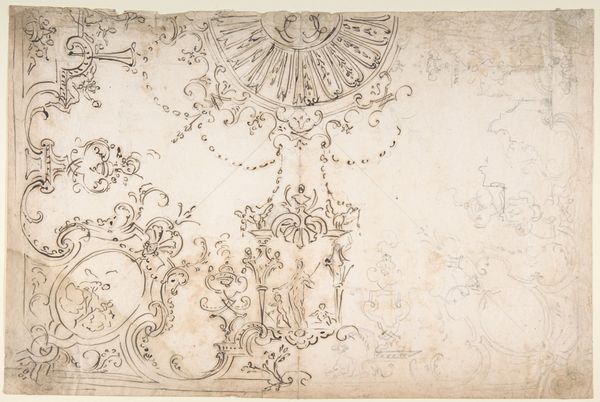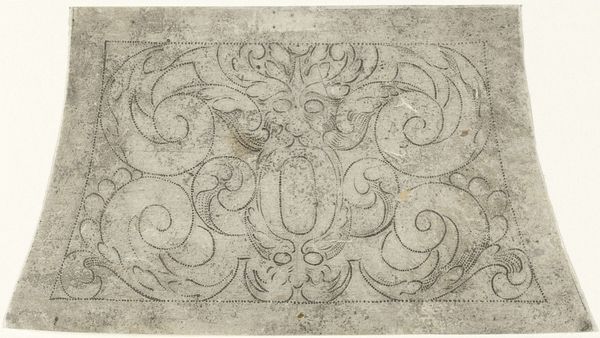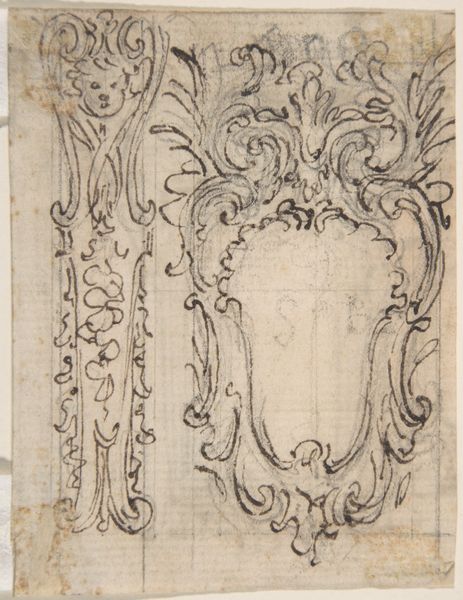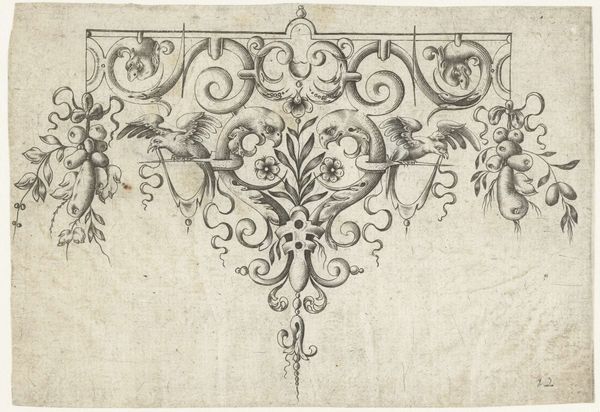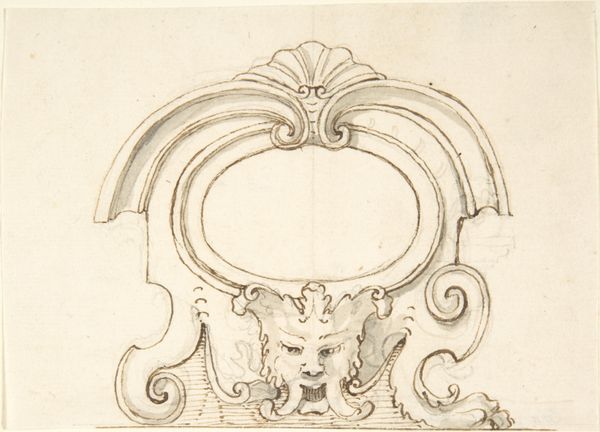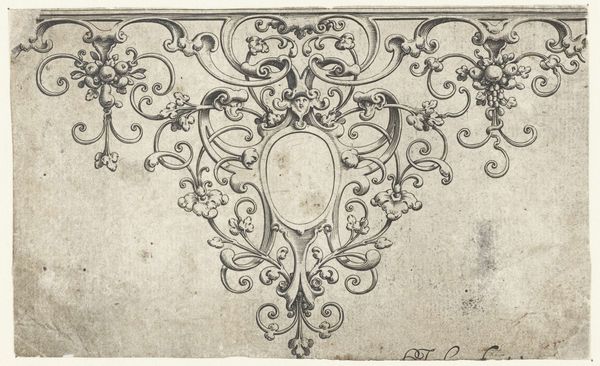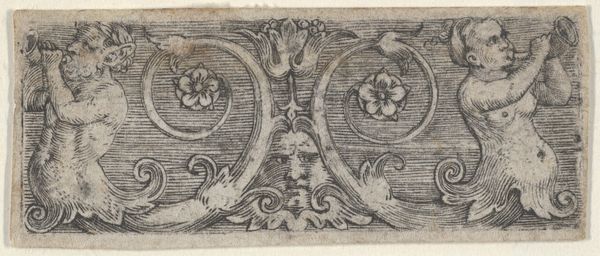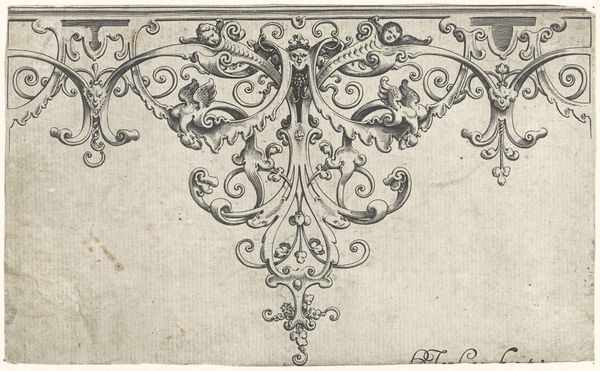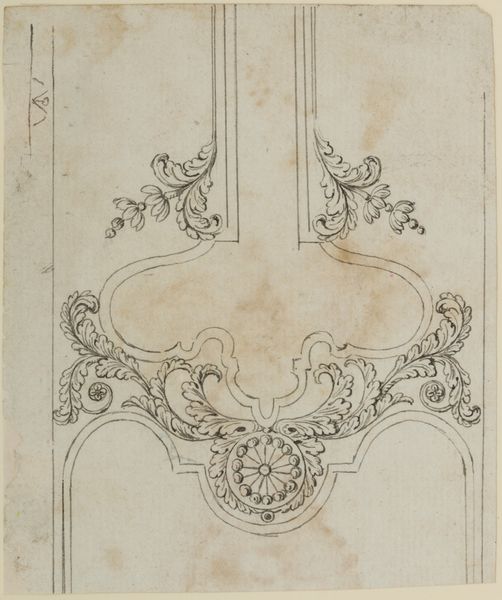
drawing, pencil
#
drawing
#
figuration
#
form
#
11_renaissance
#
pencil drawing
#
pencil
#
academic-art
#
italian-renaissance
Dimensions: Irregular shape: 4-7/8 x 4-1/2 in. (12.4 x 11.4 cm)
Copyright: Public Domain
This is an architectural drawing for a spandrel in a cove by an anonymous artist. The design features a cherubic figure flanked by swags and foliage. Note the recurring motif of the putto. This winged child, often associated with love and innocence, has origins stretching back to ancient Greco-Roman art. We see echoes of Eros and Cupid, symbols of desire, transformed into the more benign, decorative figures popular during the Renaissance and Baroque periods. Yet, even in this seemingly innocent form, the putto retains a powerful, if subconscious, connection to primal emotions. Consider how this symbol has traversed time, evolving from pagan deity to Christian angel, its form and meaning shifting with cultural currents. This transformation speaks to the enduring human fascination with childhood and the complicated relationship between innocence and desire. The persistence of the putto in art, architecture, and design reveals the cyclical nature of symbols and the way they resonate across generations.
Comments
No comments
Be the first to comment and join the conversation on the ultimate creative platform.
